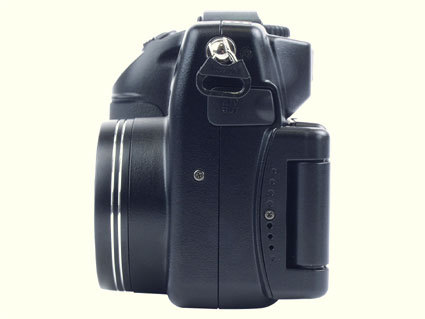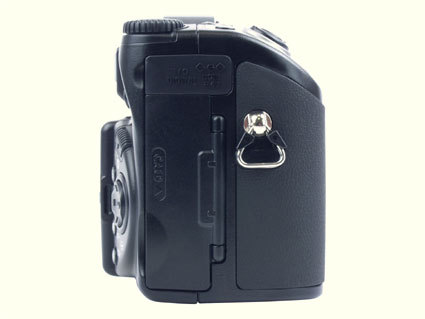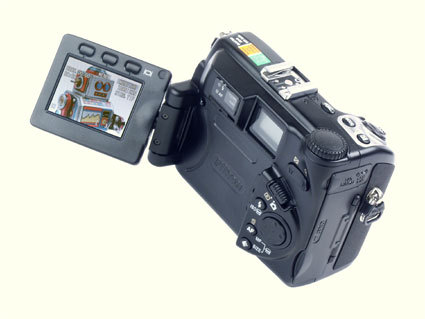Four 5-Megapixel Cameras In Review
Autofocus Above All
It is even worse with the manual focus. Though the function exists, it is virtually unusable. To activate and use it, you have to go into a pre-configured mode (C1, C2 or C3), press the AF button on the back four times, hold it and turn the jog-dial on top of the camera. At this point, using the zoom is impossible and the camera is difficult and tiring to hold. So it's best to stay in auto-focus, which is efficient if a bit slow (1.5 seconds versus less than one for the E-20). In automatic mode, the camera decides for itself what the position of the subject is, and displays the selected focus (one of five) with a small red square on the monitor.
In Use
The Coolpix 5000 is the least responsive of the four cameras we tested. It is slow to boot, taking about six seconds, and needs four to five seconds to record a JPEG photo, which is twice the time of the Olympus, Minolta and Sony. Predictably, the options get you in a muddle. The buttons are too close together and browsing through the C1, C2 and C3 menus is an arduous task. The lens is darker than on the other three 5 megapixels, but it makes the most of its wide angle, which, when combined with the noise reduction function, is very useful indoors. This option to reduce noise in indoor images, even with ISO 800, is good compensation for the narrow aperture. The colors are well rendered and, the result of the built-in optical system, details are well-defined and the definition flawless.
The 5000 is no exception to the rule: the body has a small integrated flash. But it differs from the cheaper compacts by its standard hot-shoe in the center of the camera. It has a central contact for synchronizing with any electronic flash.
Target Market
It turns out that the Coolpix 5000 is not intended to replace your conventional camera. At best, it is a complement to cameras that are too cumbersome for taking quick shots of a site or snapping a scene unobtrusively. So you'd think its market would be experienced users who want the best in digital cameras, a 5 megapixel. In the end, you feel that its main purpose is to boost the sales of the Coolpix 775 and 880. Their design, which is very similar, could lead buyers to fall back on these much more affordable cameras.
Get Tom's Hardware's best news and in-depth reviews, straight to your inbox.


